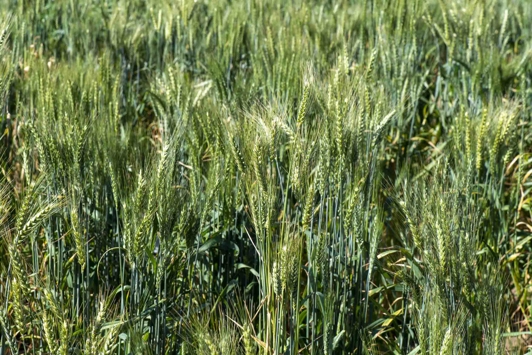How to use the tool:
- Enter the name of the weather station closest to your location and select it from the drop-down list.
- Select the summer start date, which must be before the start of the growing season. The summer start date is set to 1 November of the year prior to the current growing season. You may wish to change this if, for example, a large rainfall event occurred in early November that is unlikely to affect the soil moisture status at the end of summer. In this circumstance, set a later summer start date to exclude that event.
The end of summer will be automatically set as the day before the growing season starts. - Select the growing season start and end dates. Usually, the growing season is set to 1 May to 31 October. However, depending on their location, growers may find 1 April to 30 September more appropriate. Growing season start and end dates must be within the same calendar year.
Change the default start to summer and growing season to match the grain growing season at your location in a season.
Potential yield
Potential yield for the current growing season is calculated using the forecast date.
Growing season rainfall
Growing season rainfall must be known, up to the forecast date.
Projected decile finishes
Projected decile finishes are used to forecast growing season rainfall after the forecast date.
Forecast date
During the growing season, the forecast date is usually set to the current date.
Modelling
Estimates of potential wheat yield are obtained using the French and Schultz, current or past year, potential yield model:
Yield (tonnes/ha) = water use efficiency (WUE), calculated as stored soil water + growing season rainfall – evaporation.
Growing season rainfall is usually calculated from April to October, inclusive.
Stored soil water at the start of the growing season is estimated as one third of summer rainfall.
Growing season rainfall is composed of cumulative rainfall at the time the tables are produced plus decile rainfall finishes for the remainder of the growing season.
Rainfall deciles are generated from 1975 to the year prior to the growing season of interest.
The potential yield model assumes that:
- crop emergence occurs in April or May
- the timing of rainfall during the season does not negatively affect crop growth (there is no drying off)
- there are no soil constraints that hinder root growth.
If any of these assumptions are not met, your potential yield could be significantly lower than seen in the tables.
Different combinations of water use efficiency and evaporation may be used to estimate potential yield, in different situations. For example, water use efficiency tends to increase from north to south across the Western Australian grainbelt, and from lower to higher rainfall areas.
Typical combinations of water use efficiency and evaporation are provided in Table 1.
| Table 1. Examples of typical combinations of water use efficiency and evaporation. | ||
|
Situation |
Water use efficiency (kg/ha/mm) |
Evaporation (mm) |
|
Normal season (decile 4, 5, 6), deep sandy duplex and loamy earth, warm finish. |
15 |
110 |
|
Wet season (decile 7, 8, 9), deep duplex, loamy earth and deep well-structured clays, stored water from summer or very good spring rain. |
20 |
110 |
|
Normal season (decile, 4, 5, 6, 7), duplex soils, cool finish with better rain in spring. |
15 |
90 |
|
Dry season (decile 1,2), soil with low water holding capacity, late emergence or very poor early growth, warm spring. |
12 |
110 |
|
Dry season (decile 3), shallow soil or soil with low water holding capacity, late emergence, or very poor early growth. |
12 |
90 |
While potential yield estimates can help create a narrative for the progress of a crop and help in-season decision-making, other key factors also need to be considered to predict an accurate potential yield, including:
- soil status and characteristics, including stored soil moisture, soil water-holding capacity and any barriers to infiltration.
- stored nitrogen and other nutrient availabilities.
- factors such as non-wetting, waterlogging through topography, or impermeable layers, leaching, or dispersible clays in the soil.
The timing and event intensity of rain during the growing season can also significantly influence the conversion of rainfall to biomass and yield.

